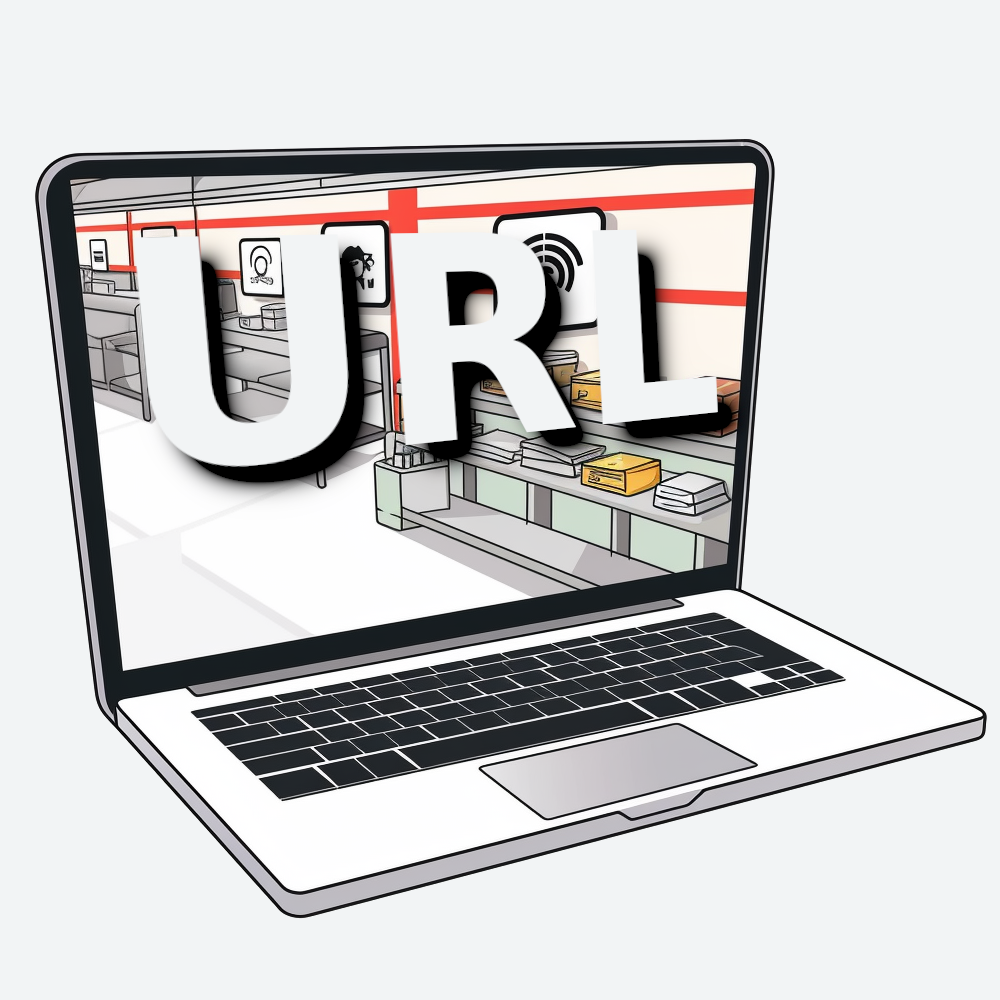


URL stands for "Uniform Resource Locator." It's a fundamental concept in web technology, and it's used to identify and locate resources on the internet. A URL is essentially the web address you use to access websites, web pages, files, or any other online resource. Here's a detailed explanation of what a URL is and how it works:
1. Structure of a URL:
A URL is composed of several components that provide information about how to access a resource on the web. The basic structure of a URL consists of the following parts:
bash
Copy code
scheme://host:port/path?query#fragment
Here's a breakdown of each component:
Scheme (or Protocol): This part specifies the protocol or method used to access the resource. Common schemes include "http://" for Hypertext Transfer Protocol (HTTP), "https://" for secure HTTP, "ftp://" for File Transfer Protocol (FTP), and "mailto:" for email addresses.
Host: The host identifies the domain or IP address where the resource is located. For example, in the URL "https://www.example.com," "www.example.com" is the host.
Port: The port is an optional component that specifies a specific communication port on the host. It is often omitted because web browsers default to commonly used ports like 80 for HTTP and 443 for HTTPS.
Path: The path specifies the location of the resource on the webserver. It often resembles the directory structure of the webserver's file system. For example, "/folder/file.html" indicates the file "file.html" is located in the "folder" directory on the server.
Query: The query component is used to pass parameters or data to the resource. It starts with a question mark and can include key-value pairs, often separated by ampersands (&). For example, "?search=term&page=1" can be used to pass search criteria and page number to a web page.
Fragment (or Anchor): The fragment is used to specify a specific section or anchor within a web page. It begins with a hash symbol (#), followed by the identifier of the anchor. For example, "#section2" might jump to a specific section of a long web page.
2. How URLs Work:
When you enter a URL into your web browser's address bar and hit Enter, the browser parses the URL to understand the components.
The browser uses the "scheme" to determine the protocol to use for communication (e.g., HTTP or HTTPS).
It then resolves the "host" to an IP address using DNS (Domain Name System) if needed.
If a "port" is specified, the browser connects to the corresponding port on the host.
The browser sends an HTTP request to the server at the specified host and port, along with any data specified in the "query."
The server processes the request, retrieves the resource specified in the "path," and sends it back to the browser, which then renders the web page or resource.
3. Examples:
Here are some examples of URLs:
https://www.example.com/index.html
ftp://ftp.example.net/files/document.pdf
mailto:info@example.org
https://www.example.com/search?q=url
https://www.example.com/page#section2
In summary, a URL (Uniform Resource Locator) is a standardized format for specifying the address and location of online resources, such as websites, web pages, files, or other content on the internet. It consists of several components, including the scheme, host, port, path, query, and fragment, each of which plays a role in how web browsers access and retrieve resources from web servers.
Marketing uses URLs in various ways to promote products, services, and campaigns online. URLs are an essential component of digital marketing strategies and are used to drive traffic, measure engagement, and enhance user experience. Here are more details on how marketing leverages URLs:
1. Branding and Recognition:
Custom, branded URLs are often used to promote a company's website and increase brand recognition.
Branded short URLs or domain names are memorable and help reinforce a company's identity in marketing materials.
2. Tracking Campaign Performance:
URL parameters or query strings are added to URLs to track the performance of marketing campaigns.
Marketers can analyze data from these URLs to measure click-through rates (CTR), conversion rates, and other key performance indicators (KPIs).
3. Campaign Targeting:
URLs can be customized to target specific audiences or demographics.
Marketers use URL parameters to send users to tailored landing pages or to apply campaign-specific tracking tags.
4. A/B Testing:
Marketers create multiple variations of a webpage and use unique URLs to split traffic and conduct A/B tests.
This allows them to determine which version of a webpage or content performs better with their audience.
5. Deep Linking:
Deep linking involves using URLs to link users directly to specific content or pages within a mobile app.
Marketers use deep links to improve the user experience and drive engagement with app content.
6. QR Codes:
QR codes often encode URLs and can be scanned by mobile devices.
Marketers use QR codes in print materials, signage, and product packaging to quickly direct users to digital content or promotions.
7. Social Media Sharing:
Social media platforms automatically generate URLs when content is shared.
Marketers optimize these URLs to include relevant keywords, hashtags, or tracking parameters to improve visibility and engagement.
8. Email Marketing:
URLs in email marketing campaigns can direct recipients to product pages, landing pages, registration forms, or other desired destinations.
UTM parameters (Urchin Tracking Module) are often used to track email campaign performance.
9. Affiliate Marketing:
Affiliate marketers use unique affiliate URLs to track referrals and earn commissions for driving sales or leads.
These URLs contain tracking codes to attribute referrals to specific affiliates.
10. Content Marketing:
- Marketers use URLs to share blog posts, articles, videos, and other content.
- They often include descriptive and SEO-friendly URLs to improve search engine rankings.
11. Shortened URLs:
- URL shortening services are used to create concise and easy-to-share URLs, especially for character-limited platforms like Twitter.
- These services also provide click-tracking data.
12. Landing Pages:
- Marketers create dedicated landing pages with specific URLs for advertising campaigns, promotions, or lead generation efforts.
- These pages are designed to convert visitors into customers or leads.
13. Influencer Marketing:
- Influencers share custom tracking URLs to measure the impact of their promotions and campaigns.
- Marketers can determine the effectiveness of influencer partnerships through these URLs.
URLs play a crucial role in digital marketing by serving as the gateway to online content and campaigns. Marketers use customized and tracked URLs to enhance branding, measure performance, target audiences, and optimize marketing efforts across various online channels, including websites, social media, email, and more.

We use cookies
We use cookies and other tracking technologies to improve your browsing experience on our website, to show you personalized content and targeted ads, to analyze our website traffic, and to understand where our visitors are coming from. Privacy Policy.